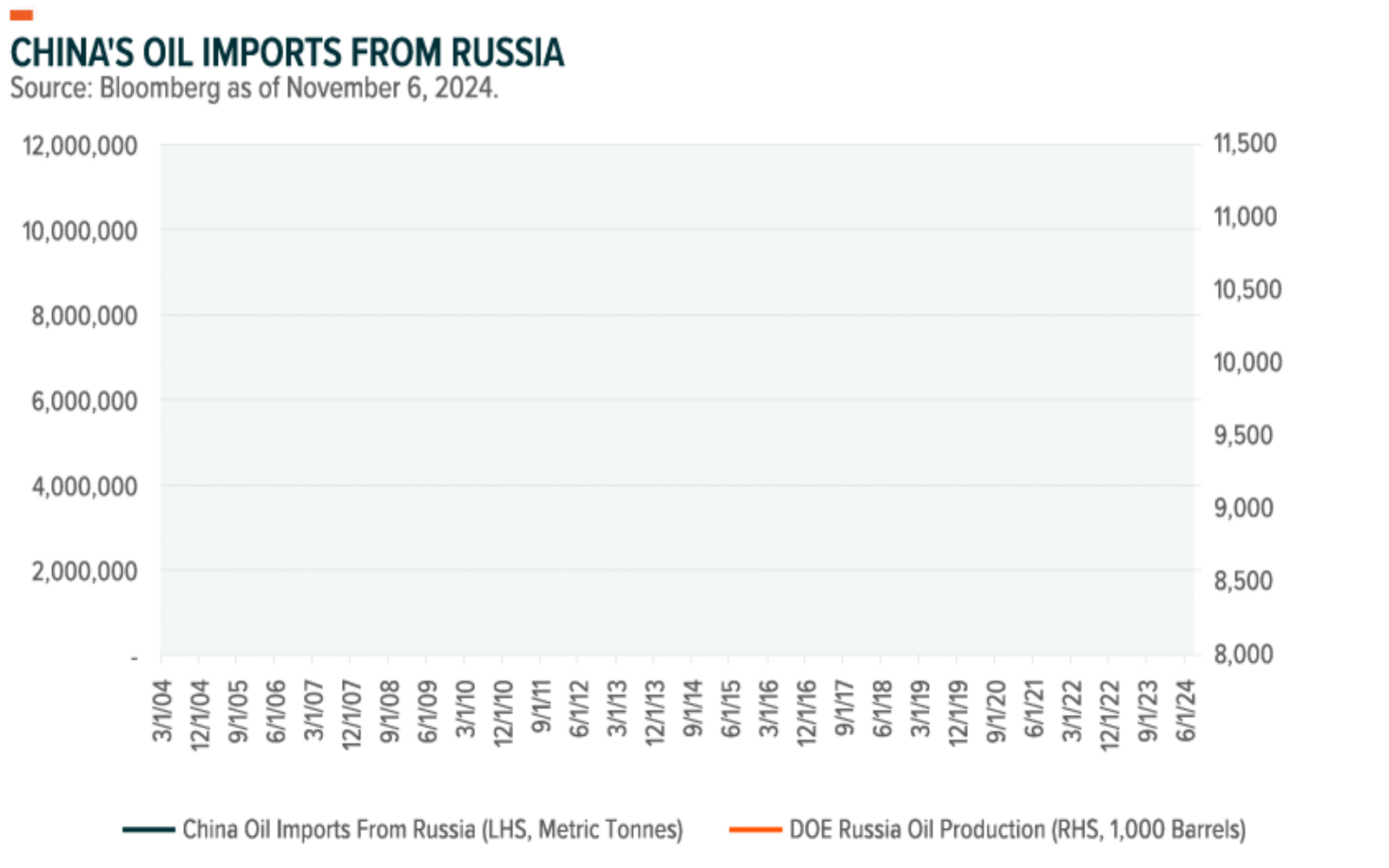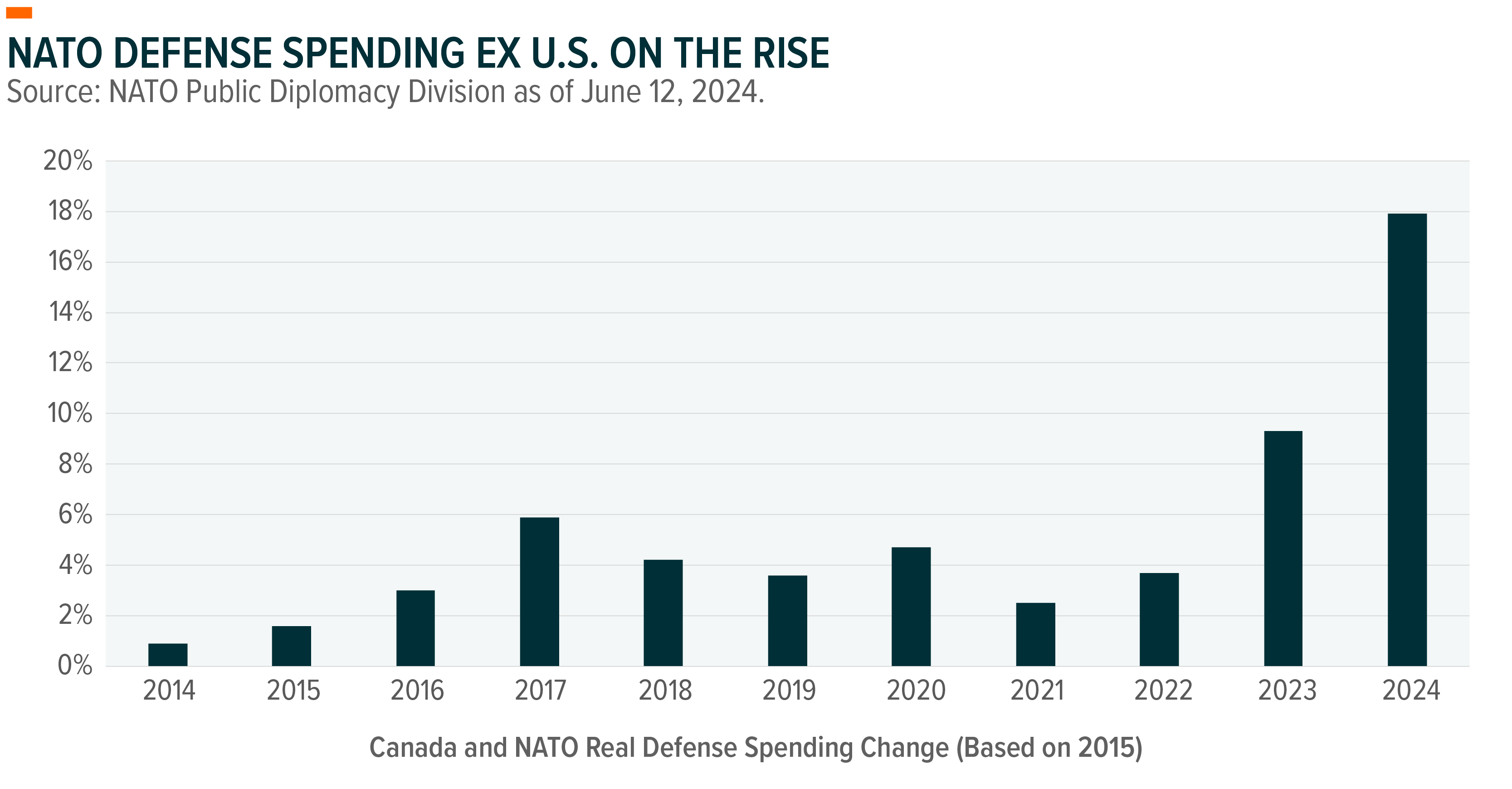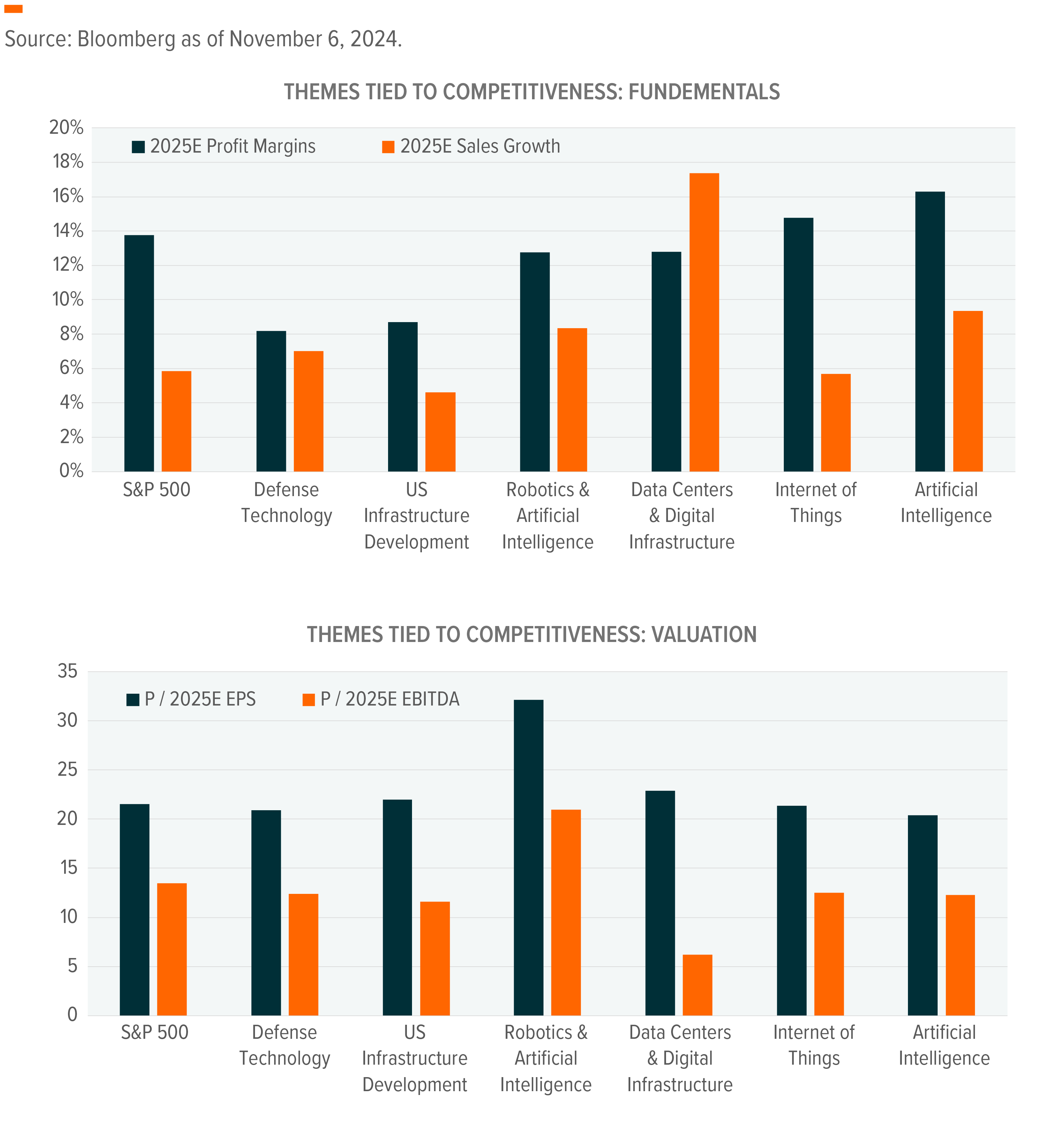Inflection Points: Beyond Regional Conflicts

Over the past few years, there has been a tendency to think about mounting challenges to U.S. interests abroad as a series of regional conflicts.1 While the war in Ukraine, rising tensions in the Taiwan Strait, the Hamas attack on Israel, and Venezuela’s seizure of Guyana territory are playing out in different parts of the world, they are all connected. An increasingly unified and emboldened opposition to the post-Cold War U.S. and Western-led international order is forming.2 North Korea’s deployment of 10,000 troops to Ukraine is but the latest example.3 Russia needs military personnel, and North Korea needs fuel and other aid. Their pairing represents a true internationalization of that conflict, and it likely received China’s approval.
Viewing these conflicts separately in a regional framework has led to a whack-’em-all mentality, where attention and efforts shift back and forth as new tensions or escalations pop up. This increasingly seems like a disservice to policymakers and investors who are trying to chart their respective courses. Despite the geopolitical uncertainty, however, we identify potential paths forward and opportunities for both.
Key Takeaways
- Security challenges across four different regions seem to represent a new and unique coordinated global campaign targeting U.S. and ally interests.
- These disputes become more prominent against a backdrop of economic, diplomatic, and military change that complicate policy decisions.
- For investors, we believe that the U.S. global competitiveness trade offers compelling opportunities across areas like defense technology, infrastructure, and automation.
An Organized Opposition
The network binding belligerents is reshaping the geopolitical landscape. Military collaboration between Russia and Iran goes back to at least April 2023, predating the October 7 attack on Israel.4 At that time, Russia was struggling in Ukraine and secured a deal for Iranian drones to augment beleaguered manpower. Iran, in return, received Russia’s advanced Su-35 fighter jet as well as air defense systems and helicopters. Then in March 2024, Iran reportedly delivered hundreds of ballistic missiles to Russia, including the Fateh-110 family with a range of 300-700km. Officials viewed this deal as a new level of cooperation.5
Also in March 2024, a shipment of Iranian fast boats made their way to Venezuela.6 Their delivery followed moves by Venezuela in December 2023 tied to the potential seizure of the disputed Essequibo region in neighboring Guyana.7 Control over the territory would give coastal claims over a series of oil fields that the United States’ companies developed in conjunction with Guyana. Since then, Venezuela has continued to build a military presence at the border. Also, lurking in nearby Havana harbor in June and July of 2024 were Russian warships, which docked there as part of exercises.8
The recent troop deployment to Ukraine is ample evidence of the Russia-North Korea relationship, but more consequentially also highlights China’s potential role in this axis—North Korea rarely makes major foreign policy decisions without consulting China.9 Russian President Vladimir Putin has been broadcasting meetings with President Xi Jinping and deepening ties with China for some time. Those ties extend to the battlefield, with the U.S. Defense Department reporting that Chinese weapons are being used in Ukraine.10 While there is no publicly identified quid pro quo on the cost of military support, according to reports from China, Russian oil now comprises a larger percentage of imports. Elsewhere, tensions in the Taiwan Strait remain high with China conducting an unannounced military exercise aimed at blockading a series of Taiwanese harbors.11

Redefining Geopolitical Equilibriums
The current challenges to the United States and its allies could be a temporary phenomenon, a blip in the international order that recedes. But that increasingly seems like wishful thinking. To be sure, no one country has the force projection capability to match the United States, but the China, Russia, Iran, North Korea, and Venezuela coalition may be able to disrupt or at least threaten the status quo.
The question is whether their resistance can persist. In our view, two elements are necessary for this coalition to present a lasting challenge. First, incentives across the coalition must remain reasonably aligned for some time. Each of these countries has revisionist aims, and provided there are mutually beneficial exchanges, there is good reason to believe that overlap in interests is sustainable. Second, they must be able to resource their efforts. The coalition might not be able to support full-scale conflicts across multiple theaters, but their capabilities across conventional and unconventional theaters should not be underestimated.
Accompanying these challenges are meaningful changes across economic, diplomatic, and military domains. While we are optimistic about the possibilities for the global and U.S. economy as the Automation Age begins, deglobalization is an important economic force. Growth in global trade has averaged 4.7% since 1980, but the International Monetary Fund (IMF) currently forecasts that it will slow to 3.2% in the next few years.12 Onshoring and diversifying supply chains likely increases economic resilience, though tariffs and other protectionist measures may aggravate existing challenges and threats.
New alliance blocks complicate longstanding relationships as countries position between them. In the Western Hemisphere, for example, leadership in Brazil and Mexico have been hesitant to criticize Venezuela following the summer election, a stark contrast to the U.S. position.13 Meanwhile, the U.S. backed away from the Trans-Pacific Trade Pact (TPP), and Donald Trump made withdrawing from the North Atlantic Treaty Organization (NATO) a central part of his campaign platform.14
Also, a new revolution in military affairs is underway with the rise of drone, or more generally, automated warfare.15 Development of new offensive and defensive military capabilities is likely to accelerate in this environment where the alliance structure that persisted since the end of World War II seems increasingly fluid.
Difficult Choices Ahead for Policymakers
The United States could choose to play a smaller role in world affairs, focusing on domestic issues and simply partnering with countries whose interests align. That course might seem appealing, but it could mean further constraints on shipping lanes, natural resources, and consumer goods. A second option could be a disciplined approach to defining and securing the most essential U.S. interests, which would require difficult and complicated tradeoffs. A third option is the continuation of current policy, attempting to sustain the unilateral U.S. and western-led order in the face of conflicts across multiple fronts.
Neither political party seems inclined for Option 1. The Republicans have focused on standing up to China on trade, while the Democrats have focused on Russia’s territorial expansion. Increasingly, those two issues are intertwined. Whether U.S. policymakers choose to redefine and narrow their strategic ambitions or continue to serve as the unilateral global power, U.S. competitiveness in the military and economic spheres will prove critical.
The U.S. government is looking to spend $850 billion and 3% of the nation’s GDP on defense, and that could increase in the coming years.16 The current defense budget is designed around fighting two conflicts simultaneously, but adversaries are clearly looking to test U.S. commitment and stretch those resources. The wars in Afghanistan and Iraq eventually received supplemental funding.
NATO allies have also increased their defense spending. For years, European countries failed to meet their NATO treaty obligation requiring a commitment to spend at 2% of GDP on defense. Three years ago, only six nations met the criteria. Today, 21 countries hit that threshold. Whether motivated by the war in Ukraine or the risk of a U.S. withdrawal from the treaty, NATO allies are expected to further increase defense spending meaningfully.17

Opportunities in the Push for Competitiveness
Incremental defense spending and continued innovation is likely necessary to sustain the U.S. military’s leadership position, but competition in the economic realm is also likely to intensify. Maintaining U.S. economic leadership may prove as important, if not more important.18 Infrastructure improvement and adoption of automation technologies will be critical to that effort and are also largely bipartisan issues.

Both Defense Technology and U.S. Infrastructure companies have historically generated margins that fall below the S&P 500 with sales growth that is generally in line. With increased spending in both defense and domestic infrastructure sales growth for both themes could accelerate in 2025 and beyond. Perhaps more importantly, profit margins in Defense Technology could rise in the coming years with increased adoption of new technologies. For example, profit margins at traditional defense companies like General Dynamics and Lockheed have run 8% to 9%, but emerging companies like Palantir and AeroVironment are running margins above 10% in recent filings.19
Aggregate spending makes headlines, but the new revolution in military affairs is changing the how those funds are spent, and where we believe investors have opportunities. Large platforms like aircraft carrier groups and third-generation fighter planes probably remain prominent, but off-the-shelf technology and emerging automation capabilities are increasingly important. Additional spending in areas like AI, augmented reality, cybersecurity, drones, and space seems likely. Sourcing critical components to smart systems like sensors, biometric screening, and connectivity tools will also gain importance.
Beyond the realm of defense technology, infrastructure could remain a vital concern with energy independence becoming a more prominent part of the discussion. Notable for investors is that the U.S. government is still in the process of spending and allocating the $1.2 trillion from the Infrastructure Investment and Jobs Act and the $300 billion from the CHIPS Act. Manufacturing growth in the U.S. has recently leveled off, but that follows a rapid step-up in manufacturing new orders since 2020 from $462 billion prior to the pandemic to $584 billion in September 2024.20 Automation, across both robotics and AI, will help the U.S. remain competitive in manufacturing and help to manage costs amid the continued push for onshoring.

Many of the themes tied to automation like AI, internet of things, and data centers are selling valuations that are in line with the S&P 500 despite fundamentals like profit margins and sales growth that are forecasted to be superior.21 This is an opportunity to shift assets into areas that could have better fundamentals than the broad market. The standout is the robotics valuation, which is running above that of the S&P 500. Given the relatively low penetration of robots in the U.S. per manufacturing employee, there could be potential for improvements in sales and margins that warrant the premium.
We expect opportunities to emerge from both government spending and private investment across multiple investment themes. Despite party divides, U.S. competitiveness remains bipartisan even in divisive times, and both parties continue highlighting the importance of a strong America and economic leadership in their platforms.
